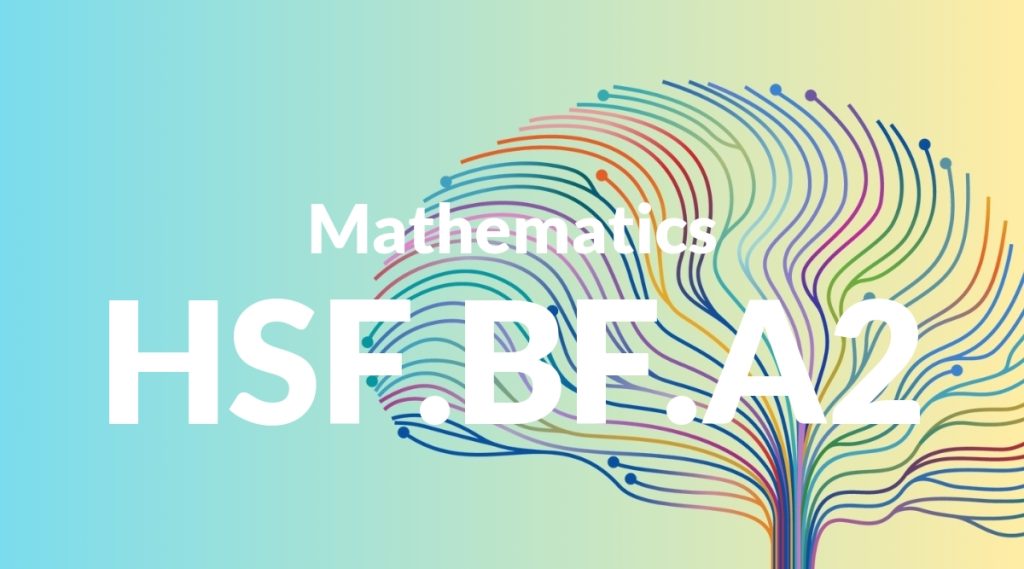Standard: HSF.BF.A2 – Write arithmetic and geometric sequences both recursively and with an explicit formula, use them to model situations, and translate between the two forms.*
Grade level: High School: Functions
Subject: Mathematics
Domain: Building Functions
Teacher Overview
This standard focuses on understanding and applying arithmetic and geometric sequences in various forms. It is crucial for modeling real-world situations and serves as a foundation for more advanced mathematical concepts. Mastery of this standard will enhance students’ problem-solving skills and their ability to think abstractly. Students should be comfortable with basic algebra, including solving equations and understanding functions. They should also be familiar with the concept of sequences and the differences between arithmetic and geometric sequences.
Students will be able to apply their understanding of sequences to more complex mathematical models, including series and summations. This knowledge will also prepare them for advanced topics in calculus and discrete mathematics.
Common Misconception 1
Students may often confuse arithmetic sequences, where the difference between terms is constant, with geometric sequences, where each term is a constant multiple of the previous term. This confusion can lead to errors in identifying and solving problems related to sequences.
Intervention 1
Use visual aids such as graphs and tables to show the differences between arithmetic and geometric sequences. Incorporate real-world examples and hands-on activities to reinforce the concepts.
Common Misconception 2
Students might find it challenging to translate between recursive and explicit formulas. They may not see the connection between the two forms, leading to difficulties in applying them to solve problems.
Intervention 2
Provide clear, step-by-step instructions and plenty of practice problems. Use interactive tools and visual representations to help students understand the process of converting between recursive and explicit forms.
Prerequisite Knowledge
Students should understand basic algebraic operations, the concept of sequences, and the difference between arithmetic and geometric sequences. Familiarity with linear and exponential functions is also beneficial.
Subsequent Knowledge
After mastering this standard, students will be able to apply sequences to more complex mathematical models, understand series and summations, and explore advanced topics like calculus and discrete mathematics.
Instructional Activities
- Create and analyze arithmetic and geometric sequences from real-world data.
- Convert between recursive and explicit formulas using guided practice.
- Use graphing tools to visualize sequences and their differences.
- Solve real-world problems involving sequences, such as financial calculations or population models.
- Engage in group activities to reinforce the concepts through collaborative learning.




